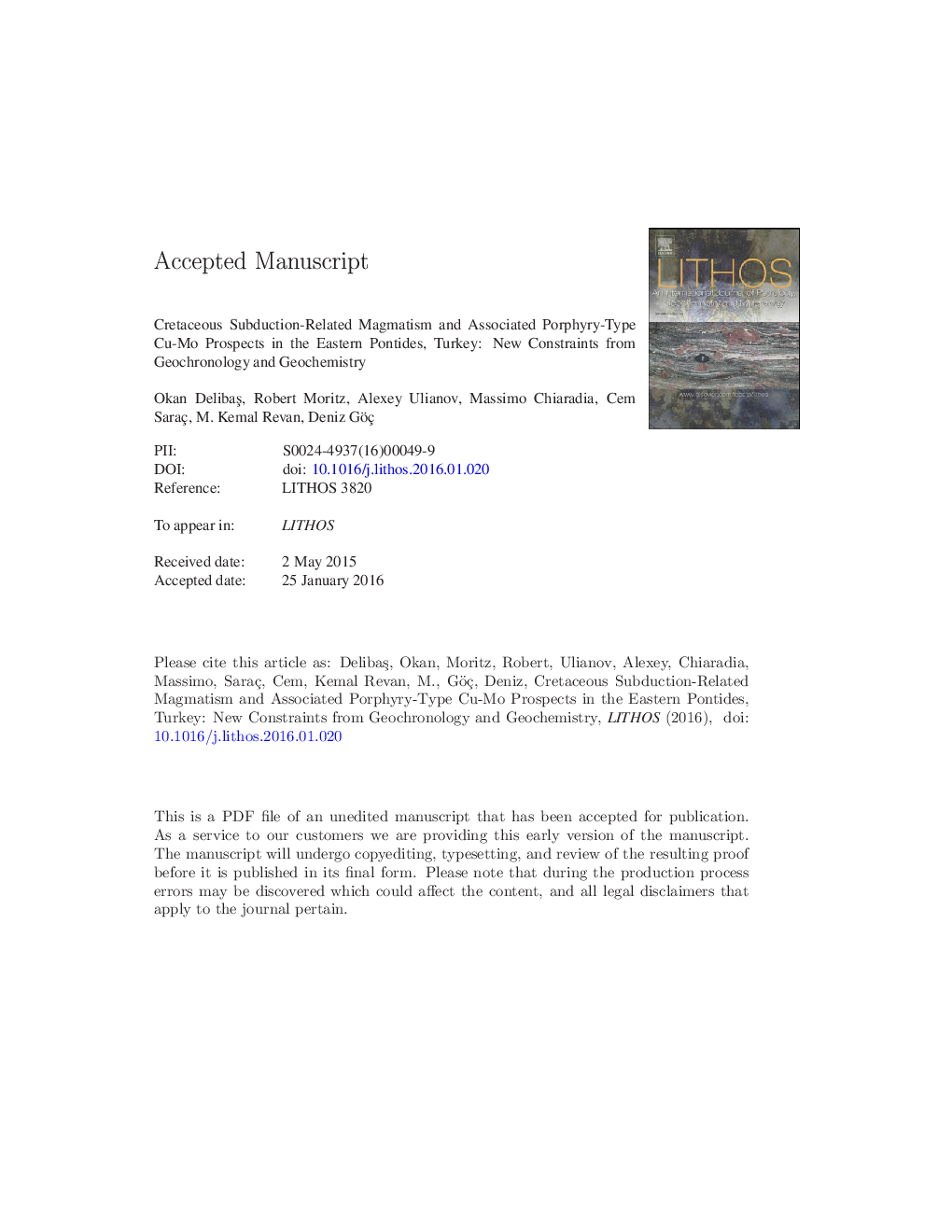| Article ID | Journal | Published Year | Pages | File Type |
|---|---|---|---|---|
| 6440387 | Lithos | 2016 | 73 Pages |
Abstract
This study focuses on the Elbeyli-Ordu, Emeksen-Giresun, Güzelyayla-Trabzon and UlutaÅ-Ispir porphyry-type prospects located in the Eastern Pontides, Turkey. Our new LA-ICP-MS U-Pb zircon age data reveal that the Elbeyli-Ordu Mo-Cu mineralization is hosted by a 77.0 ± 1.3 Ma-old monzonite/monzodiorite with a shoshonitic character. The Emeksen Mo mineralization, located ~ 40 km southeast of the Elbeyli-Ordu prospect, consists of NW- and NE-striking quartz veins crosscutting a high-K calc-alkaline to shoshonitic granite dated at 78.5 ± 0.8 Ma, a granodiorite dated at 78.7 ± 0.5 Ma and porphyry granite dated at 77.7 ± 0.5 Ma. The Güzelyayla porphyry Cu-Mo prospect consists of a stockwork-type Cu-Mo mineralization crosscutting a calc-alkaline 81.4 ± 1.1 Ma-old dacite porphyry and Late Cretaceous calc-alkaline andesite. The Ispir-UlutaÅ mineralization is hosted within a highly sericitized 131.1 ± 0.9 Ma-old quartz-porphyry that intruded into a 132.9 ± 0.6 Ma-old calc-alkaline granite porphyry. Our new U-Pb zircon ages, lithogeochemical and radiogenic isotopic data of the host rocks associated with the porphyry-type prospects in the Eastern Pontides indicate that they formed in an arc-related environment during Cretaceous subduction of the Neotethys Ocean, and the Ispir-UlutaÅ prospect is attributed to the main stage of the northward subduction of the Neotethys during the Early Cretaceous. We conclude that the Güzelyayla and Emeksen hydrothermal systems were formed during a transitional compressional to extensional tectonic evolution, whereas the Late Cretaceous Elbeyli hydrothermal system was emplaced during an extensional arc magmatic event. Highly-oxidized, high-K calc-alkaline to shoshonitic magmas at Emeksen and Elbeyli were derived from a metasomatized, heterogeneous and enriched lithospheric mantle, with variable degrees of partial melting of the mantle wedge and variable crustal contamination. Mixing/mingling processes between mafic magmas derived from the lower crust and acidic magmas at upper crustal levels played an important role in the formation of Cu-Mo porphyry-type mineralization in the Eastern Pontides.
Related Topics
Physical Sciences and Engineering
Earth and Planetary Sciences
Geochemistry and Petrology
Authors
Okan DelibaÅ, Robert Moritz, Alexey Ulianov, Massimo Chiaradia, Cem Saraç, Kemal M. Revan, Deniz Göç,
